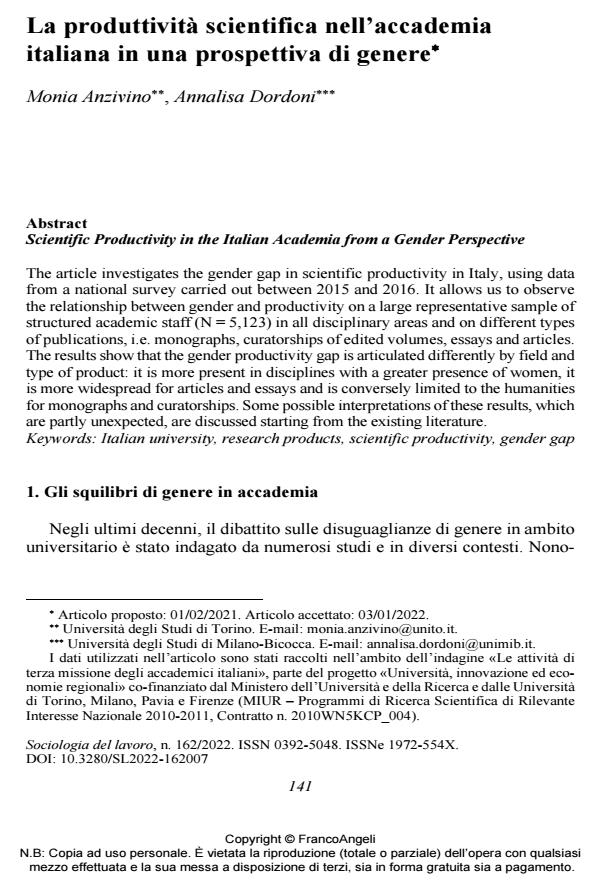La produttività scientifica nell’accademia italiana in una prospettiva di genere
Titolo Rivista SOCIOLOGIA DEL LAVORO
Autori/Curatori Monia Anzivino, Annalisa Dordoni
Anno di pubblicazione 2022 Fascicolo 2022/162
Lingua Italiano Numero pagine 23 P. 141-163 Dimensione file 233 KB
DOI 10.3280/SL2022-162007
Il DOI è il codice a barre della proprietà intellettuale: per saperne di più
clicca qui
Qui sotto puoi vedere in anteprima la prima pagina di questo articolo.
Se questo articolo ti interessa, lo puoi acquistare (e scaricare in formato pdf) seguendo le facili indicazioni per acquistare il download credit. Acquista Download Credits per scaricare questo Articolo in formato PDF

FrancoAngeli è membro della Publishers International Linking Association, Inc (PILA)associazione indipendente e non profit per facilitare (attraverso i servizi tecnologici implementati da CrossRef.org) l’accesso degli studiosi ai contenuti digitali nelle pubblicazioni professionali e scientifiche
L’articolo indaga il gender gap nella produttività scientifica in Italia, utilizzando i dati di un’indagine nazionale condotta tra il 2015 e il 2016, che permette di osservare la relazione tra genere e produttività su un ampio campione rappresentativo del personale accademico strutturato (N=5.123) in tutte le aree disciplinari e su diversi tipi di pubblicazione, monografie, curatele, saggi e articoli. I risultati mostrano che il divario di genere si articola diversamente per area disciplinare e per tipo di prodotto: è maggiormente presente nelle aree disciplinari a maggior presenza femminile; è più diffuso per gli articoli e i saggi; è invece limitato alle scienze umanistiche per le monografie e le curatele. Alcune possibili interpretazioni di questi risultati, in parte inattesi, sono discusse a partire dalla letteratura esistente.
Parole chiave:università italiana, prodotti della ricerca, produttività scientifica, divario di genere
- Diversity and Inclusion in Italy Viviana Meschitti, pp.377 (ISBN:978-3-031-81937-7)
Monia Anzivino, Annalisa Dordoni, La produttività scientifica nell’accademia italiana in una prospettiva di genere in "SOCIOLOGIA DEL LAVORO " 162/2022, pp 141-163, DOI: 10.3280/SL2022-162007